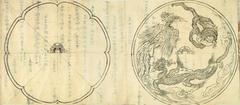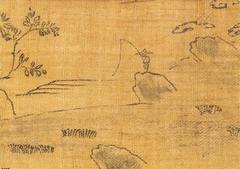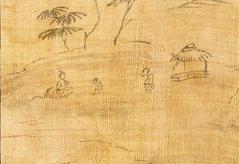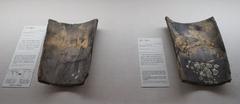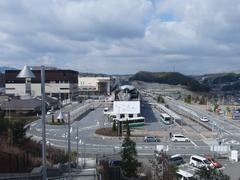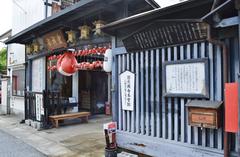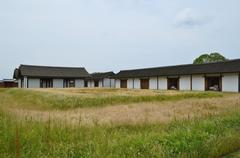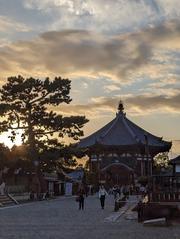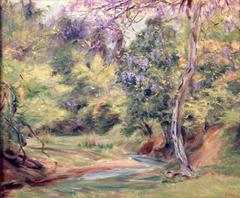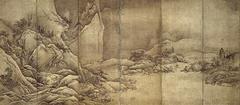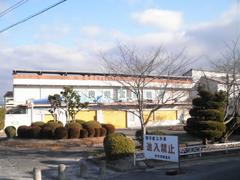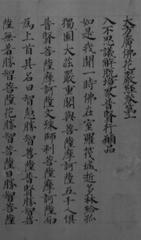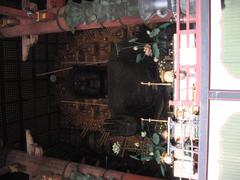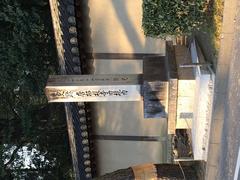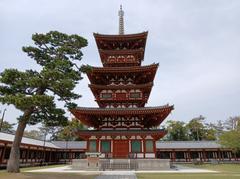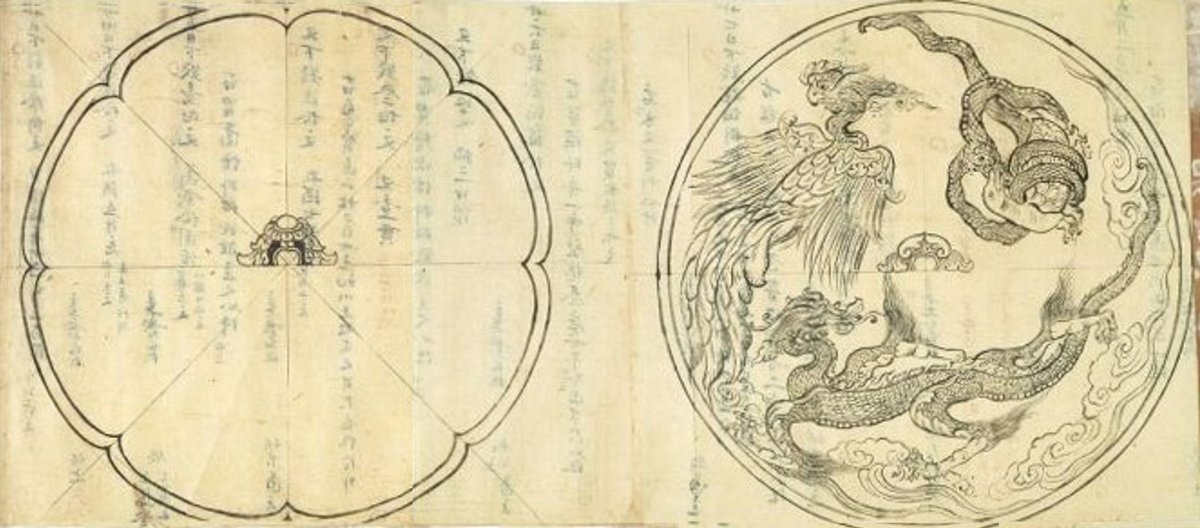
Shōsōin Visiting Hours, Tickets, and Guide to Nara Historical Sites
Date: 2025-06-14
Introduction to Shōsōin and Its Historical Significance
Situated within Nara’s UNESCO World Heritage precincts, the Shōsōin repository stands as a remarkable testament to Japan’s cultural and historical depth during the Nara period (710–794 CE). Although the storehouse itself is not open to the public due to the fragile nature of its collection, Shōsōin offers unparalleled insights into ancient Japan’s imperial heritage, religious devotion, and cosmopolitan exchanges along the Silk Road. Built in the mid-8th century in the characteristic azekura-zukuri architectural style, Shōsōin originally served to safeguard treasures associated with the consecration of the Great Buddha (Daibutsu) at Tōdai-ji Temple, reflecting both architectural innovation and cultural importance (Imperial Household Agency).
The Shōsōin collection includes more than 9,000 artifacts—textiles, musical instruments, lacquerware, glassware, Buddhist sutras, and administrative documents—that embody the cosmopolitan spirit of Nara as a political, religious, and cultural hub. Many objects showcase Japan’s interactions with Tang China, Silla Korea, Central Asia, Persia, and beyond, underscoring the far-reaching influence of Silk Road trade routes (Nara City Tourism Association; Harvard University).
Although direct access to the repository is restricted, the annual Shōsōin Exhibition at the nearby Nara National Museum grants visitors a unique opportunity to view select treasures. This event, typically held in autumn, is complemented by guided tours, lectures, and multilingual support. Alongside Shōsōin, Nara’s other historical sites—including Tōdai-ji Temple, Kasuga Taisha Shrine, Kōfuku-ji Temple, and the scenic Nara Park—offer a comprehensive cultural journey through ancient Japan (Nara National Museum; Visit Nara).
Whether you are a history enthusiast, culture seeker, or a first-time visitor, understanding the Shōsōin’s background and how to experience its treasures will enrich your exploration of Nara’s historical landscape.
Contents Overview
- Introduction to Shōsōin and Its Historical Significance
- Origins and Architecture of Shōsōin
- The Nara Period and Silk Road Cultural Exchange
- The Shōsōin Collection: Artifacts and Legacy
- Visiting Shōsōin: Exhibition Hours, Tickets, and Access
- Travel Tips and Accessibility
- Annual Exhibition: Details and Visitor Experience
- Exploring Nara’s Historical Landmarks
- Seasonal Highlights and Cultural Events
- Visitor Facilities, Accessibility, and Practical Tips
- Frequently Asked Questions (FAQ)
- Conclusion and Visitor Recommendations
- Sources and Further Reading
Origins and Architecture of Shōsōin
The Shōsōin is the only surviving example of the ancient “shoso” repositories used to store temple and governmental property during the Nara period. Constructed in the mid-8th century, it was built to protect treasures donated for the consecration of the Great Buddha at Tōdai-ji Temple in 752 CE. Its azekura-zukuri architectural style, using interlocking triangular logs elevated on stilts, was ingeniously designed to protect against moisture and pests, helping preserve its contents for over 1,200 years (Imperial Household Agency).
The Nara Period and Silk Road Cultural Exchange
During the Nara period, Japan established its first permanent capital at Heijō-kyō (now Nara), transforming the city into a vibrant center of political, religious, and international activity. Nara’s position at the eastern terminus of the Silk Road facilitated the movement of people, ideas, and goods between Japan and regions as distant as Central Asia, Persia, India, and the Mediterranean. The Shōsōin’s collection reflects this dynamic cultural exchange, with artifacts influenced by or originating from across Eurasia (Visit Nara; UNESCO).
The Shōsōin Collection: Artifacts and Legacy
The Shōsōin houses more than 9,000 objects—including textiles, musical instruments, lacquerware, metalwork, glassware, Buddhist scriptures, and official documents. Many items are associated with Emperor Shōmu and Empress Kōmyō, who played central roles in the establishment and consecration of Tōdai-ji’s Great Buddha. The collection’s diversity illustrates Japan’s openness to artistic, technological, and religious influences from the Silk Road (shaopeng.blog).
Categories of Treasures:
- Textiles: Ancient brocades, embroideries, and carpets featuring motifs such as winged horses and grapevines, characteristic of Central Asian and Persian art.
- Musical Instruments: Rare instruments like the biwa (lute), shō (mouth organ), and kugo (angular harp), some imported from or modeled after Central Asian and Chinese prototypes.
- Lacquerware and Woodwork: Finely crafted boxes and furniture, blending domestic Japanese techniques with influences from abroad.
- Metalwork and Glass: Mirrors, incense burners, and glassware, some originating from the Middle East or inspired by Sasanian and Roman designs.
- Documents and Sutras: Buddhist scriptures and administrative records, offering invaluable insights into Nara-period society and ceremonial life.
Visiting Shōsōin: Exhibition Hours, Tickets, and Access
Important: The Shōsōin repository is not open to the public due to preservation concerns. However, the treasures are displayed annually at the Nara National Museum during the Shōsōin Exhibition.
- Exhibition Period: Usually late October to early November, with exact dates announced annually.
- Visiting Hours: The museum is open from 9:30 AM to 5:00 PM (last admission at 4:30 PM), though hours may vary during the exhibition.
- Tickets: Advance purchase is required, with sales typically starting in early September. Tickets specify a date and time slot to manage crowds.
- Pricing: Admission ranges from ¥1,500 to ¥2,000 for adults, with discounts for students and seniors.
- How to Buy: Tickets are available online via the museum’s official website and authorized partners. International visitors are encouraged to book early (Nara National Museum).
Travel Tips and Accessibility
- Location: The Shōsōin is located within the Tōdai-ji Temple complex, just north of the Great Buddha Hall. The Nara National Museum, where the exhibition is held, is a short walk away.
- Getting There: From Kyoto or Osaka, take the JR or Kintetsu lines to Nara Station. The museum is a 20–25 minute walk or a short ride by local bus or taxi (twowanderingsoles.com).
- Accessibility: The Nara National Museum is wheelchair accessible, with ramps, elevators, and accessible restrooms. Assistance is available upon request.
- Facilities: Multilingual audio guides, lockers, and restrooms are provided. The nearby Nara Visitor Center & Inn offers additional support and travel information (visitnara.jp).
Annual Exhibition: Details and Visitor Experience
The Annual Shōsōin Exhibition is a major cultural event in Nara, attracting visitors from across Japan and abroad. Each year, approximately 60 artifacts are selected for display, often including objects unveiled to the public for the first time. The museum provides multilingual support, guided tours, and detailed exhibition materials.
- Photography: Prohibited inside exhibition halls to protect the treasures.
- Audio Guides: Available for rent in multiple languages.
- Guided Tours: Free volunteer-guided tours are offered by local organizations such as the Nara SGG Club and Nara Guide Club (sarusawa-nara.com).
Exploring Nara’s Historical Landmarks
Enhance your visit by exploring these nearby sites:
- Tōdai-ji Temple: Home to the Great Buddha Hall and Japan’s largest bronze Buddha statue (todaiji.or.jp).
- Nara Park: Famous for its friendly, free-roaming deer and scenic walking paths (trip.com).
- Kasuga Taisha Shrine: Renowned for its thousands of hanging lanterns and Shinto heritage.
- Kōfuku-ji Temple: Features the iconic Five-Story Pagoda and an excellent Buddhist art museum.
- Isuien Garden and Neiraku Art Museum: Blend landscape artistry and East Asian ceramics.
- Naramachi: A historic merchant district with preserved machiya houses and artisan shops.
- Mt. Wakakusa: Offers panoramic city views and seasonal events like the Yamayaki fire festival.
- Hōryū-ji Temple: A UNESCO site with some of the world’s oldest wooden structures.
Seasonal Highlights and Cultural Events
Nara’s events add depth to your visit:
- Nara Tokae Lantern Festival (August): Thousands of lanterns illuminate Nara Park.
- Omizutori (March): Dramatic fire ceremonies at Tōdai-ji’s Nigatsudo Hall.
- Hydrangea Season (June–July): Yatadera Temple gardens bloom with hydrangeas.
Check local calendars for festival schedules and details.
Visitor Facilities, Accessibility, and Practical Tips
- Transportation: Nara is easily accessible from Kyoto and Osaka. Most historical sites are within walking distance of Kintetsu Nara and JR Nara stations.
- Passes: Consider the Kansai Activities Pass or JR Kansai Area Pass for savings on transportation and attractions.
- Accommodation: Options range from traditional ryokan to modern hotels; Nara Hotel and temple lodgings offer unique experiences.
- Dining: Local specialties include kakinoha-zushi (persimmon leaf sushi) and Nara pickles.
- Shopping: Explore Higashimuki Shopping Street and Naramachi for crafts and souvenirs.
Visitor Tips:
- Arrive early or visit on weekdays to avoid crowds.
- Wear comfortable shoes and dress for the season.
- Food and drink are prohibited inside exhibition spaces.
- Photography is not allowed in the exhibition but permitted in designated exterior areas.
Frequently Asked Questions (FAQ)
Q: Can I visit inside the Shōsōin repository?
A: No. The repository itself is not open to the public, but its treasures are displayed annually at the Nara National Museum.
Q: When is the Shōsōin Exhibition held?
A: Annually, usually from late October to early November. Check the Nara National Museum’s website for specific dates.
Q: How do I buy tickets for the Shōsōin Exhibition?
A: Tickets must be purchased in advance, online or at the museum. Early booking is recommended.
Q: Is the exhibition accessible for visitors with disabilities?
A: Yes. The Nara National Museum is wheelchair accessible and offers support services.
Q: What are the best times to visit Nara’s historical sites?
A: Early mornings or late afternoons, especially during cherry blossom (spring) or autumn foliage seasons.
Conclusion and Visitor Recommendations
The Shōsōin is a cornerstone of Japan’s cultural heritage, offering a glimpse into the Nara period’s imperial life and the vibrant cultural exchanges facilitated by the Silk Road. While the repository itself is not open to the public, the annual exhibition at the Nara National Museum is a rare opportunity to experience these treasures firsthand. Coupled with Nara’s wealth of historical sites, gardens, and seasonal festivals, your visit promises an immersive journey into Japan’s ancient past.
Plan ahead by securing tickets, checking accessibility, and consulting official resources for the most current information. Utilize guided tours and audio guides to deepen your understanding, and take advantage of Nara’s modern visitor facilities and multilingual support. The integration of traditional culture with contemporary hospitality ensures a rewarding and memorable experience.
For updates, travel tips, and more, download the Audiala app or visit the official museum and tourism websites. Start planning your journey today to explore the timeless legacy of Shōsōin and discover the historic wonders of Nara.
Sources and Further Reading
- Visiting Shōsōin: Hours, Tickets, and Exploring Nara’s Historic Treasure House, 2024, Imperial Household Agency (Imperial Household Agency)
- Visiting the Shōsōin Treasures: Hours, Tickets & Nara Historical Sites, 2024, Harvard University & Nara City Tourism Association (Harvard University), (Nara City Tourism Association)
- Shōsōin Visiting Hours, Tickets, and Guide to Nara’s Historical Treasure House, 2024, travelaction.co.jp & twowanderingsoles.com (travelaction.co.jp), (twowanderingsoles.com)
- Shōsōin Visiting Hours, Tickets, and Nearby Attractions in Nara Historical Sites, 2024, Nara National Museum & visitnara.jp (Nara National Museum), (Visit Nara)
